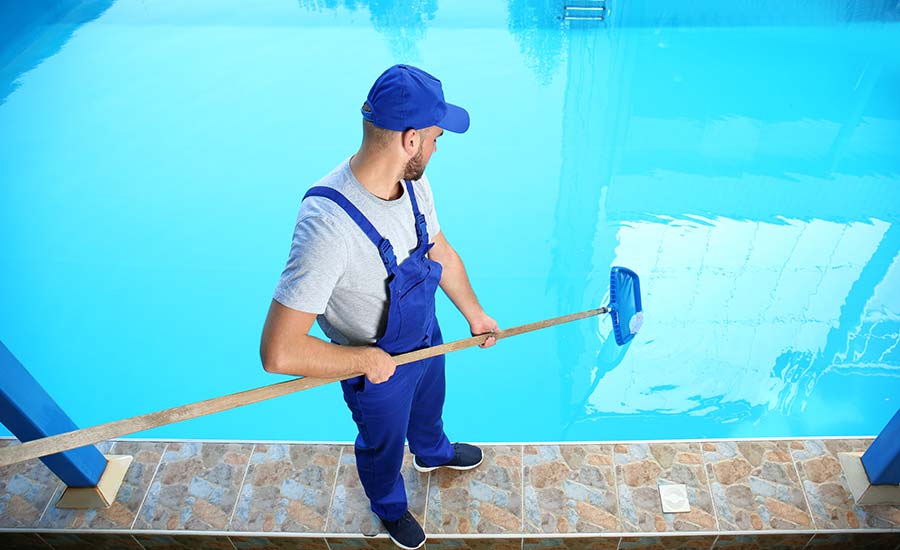Introduction: The Value of Consistent Pool Upkeep
Both enjoyment and health depend on keeping the pool clean and safe. An enjoyable pastime can become dangerous if pools are not properly maintained since they can house dangerous bacteria, algae, and debris. Maintaining a pool on a regular basis keeps the water clear and swimmers safe. A Centers for Disease Control and Prevention (CDC) study found that pools that are kept up considerably lower the incidence of waterborne illnesses. This post will walk you through a thorough weekly pool care schedule that will keep your pool looking its best.
An Overview of Pool Maintenance History
Originally discovered in Greece, Rome, and Egypt, swimming pools have existed since antiquity. However, with the invention of chlorine and water filtration devices in the 20th century, the idea of pool upkeep underwent a substantial change. The general people can now own a pool more easily and easily thanks to these developments. Technological developments over time have further enhanced pool maintenance, making it a more efficient and successful procedure.

Checklist for Weekly Pool Maintenance
1. Examine and balance the chemicals in the pool.
For swimming to be safe, the chemical balance must be correct. You should test the water’s alkalinity, pH, and chlorine content once a week. A balanced pool inhibits the growth of algae and keeps dangerous microorganisms at bay. To be sure the water in your pool is chemically safe, use a quality test kit. The foundation of pool upkeep is routine chemical testing, which keeps the water clear.
2. Clear Filters for Pools
The filter in your pool is essential for clearing the water of dirt and debris. To guarantee optimum efficiency, you should clean your filter on a regular basis, depending on whether it is sand, cartridge, or DE. The system will be strained and pool maintenance efforts will be less successful if the filter is clogged. To prevent accumulation, check your filters once a week.
3. Brush and Skim the Pool
Your pool may become unattractive and unsanitary due to debris accumulation from leaves, insects, and grime. The pool’s water may be kept clean by scrubbing its walls and flooring once a week and skimming its surface every day. In order to avoid algae growth on pool surfaces, proper pool maintenance involves both brushing and skimming.

4. Use a vacuum to clean the pool.
Regular cleaning and skimming may not prevent dirt from settling at the pool’s bottom. Weekly use of a vacuum, either manual or mechanical, will help maintain the pool’s cleanliness. This procedure guarantees that every part of your pool care regimen is covered, avoiding debris from collecting in difficult-to-reach places.
5. Verify the Water Levels
Your pool’s water level may change due to evaporation or excessive use. Maintaining the optimum water level enables your pump and filter to operate as intended. As part of your monthly pool maintenance routine, develop the habit of checking the water level.
6. Should the need arise, shock the pool.
To get rid of impurities, shock the pool by adding a lot of chlorine. Take into consideration shocking the pool if you see murky water or a rise in swimmer usage. As part of your usual pool maintenance, you should perform this at least once a week, particularly during the swimming season.
7. Examine the pool apparatus
Checking your pool’s pump, filter, and other components once a week will help spot problems before they get out of hand. Make sure every piece of equipment is operating properly because ignored equipment can make it more difficult to maintain your pool as a whole.
8. Track the Growth of Algae
Your pool’s water can soon become green and slick due to algae. Check the water and pool surfaces for any indications of algae growth as part of your regular pool maintenance. If discovered, shock the pool or apply an algaecide as away.
9. Clean pool baskets and skimmers
By removing dirt from the pool’s surface, your skimmer baskets assist maintain the water’s clarity. Weekly basket emptying guarantees the skimmer is operating efficiently. Clogged baskets and decreased water circulation might arise from neglecting this aspect of pool care.
10. Examine the pool covers

When not in use, pool covers are crucial for shielding the pool from debris. Make sure the cover is clean and free of rips or damage as part of your pool maintenance routine. The quantity of material that enters the pool can be greatly decreased with a well maintained cover.
Conclusion: The Importance of Weekly Pool Maintenance
Weekly pool maintenance keeps your pool a fun and safe place for everyone. By following this pool care checklist, you can maintain your pool’s water pure, extend the life of your equipment, and save expensive repairs. According to a Pool & Hot Tub Alliance research, routine upkeep can increase a pool’s lifespan by ten to fifteen years. You can make sure your pool is always ready for a cool plunge by staying on top of these easy chores.
Questions and Responses
What occurs if I neglect the weekly pool maintenance?
A: Ignoring weekly pool upkeep can result in debris accumulation, algae growth, and contaminated water, all of which can endanger swimmers’ health. Furthermore, it may eventually lead to more involved (and costly) repairs.
How frequently should my pool be shocked?
A: The water’s condition and consumption determine this. Stunting should normally be done once a week as part of your pool’s upkeep schedule, particularly following a thunderstorm or periods of high usage.
Is it possible to perform weekly pool care using a robotic pool cleaner?
A robotic pool cleaner may remove a lot of filth and debris, but it should be used in addition to human pool care techniques like brushing and skimming, not in instead of them.
What pH level is best for pool water?
A pH range of 7.4 to 7.6 is good for pool water. A crucial part of pool maintenance is maintaining a regulated pH to protect equipment and guarantee swimmer comfort.
Is weekly upkeep sufficient for a pool that is frequently used?
A: You might need to do some pool maintenance chores, including vacuuming and skimming, more often than once a week if your pool is used a lot.








